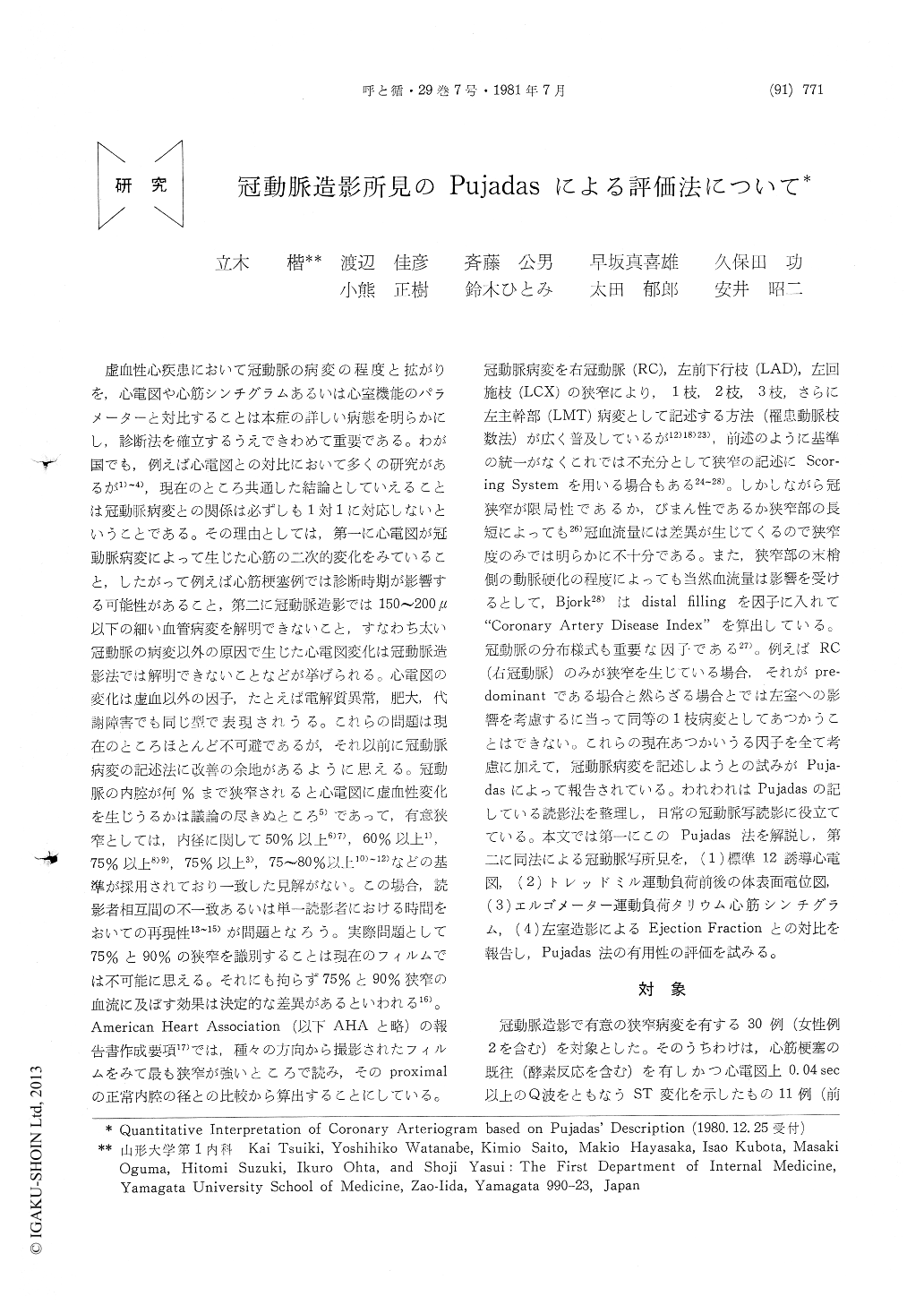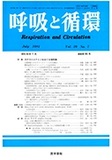Japanese
English
- 有料閲覧
- Abstract 文献概要
- 1ページ目 Look Inside
虚血性心疾患において冠動脈の病変の程度と拡がりを,心電図や心筋シンチグラムあるいは心室機能のパラメーターと対比することは本症の詳しい病態を明らかにし,診断法を確立するうえできわめて重要である。わが国でも,例えば心電図との対比において多くの研究があるが1)〜4),現在のところ共通した結論としていえることは冠動脈病変との関係は必ずしも1対1に対応しないということである。その理由としては,第一に心電図が冠動脈病変によって生じた心筋の二次的変化をみていること,したがって例えば心筋梗塞例では診断時期が影響する可能性があること,第二に冠動脈造影では150〜200μ以下の細い血管病変を解明できないこと,すなわち太い冠動脈の病変以外の原因で生じた心電図変化は冠動脈造影法では解明できないことなどが挙げられる。心電図の変化は虚血以外の因子,たとえば電解質異常,肥大,代謝障害でも同じ型で表現されうる。
We proposed a method in which coronary arteriogram can be interpreted in order to deter-mine the severity of coronary artery disease and the functional impairment of regional coronary perfusion in a quantitative sense. Original descrip-tion of Pujadas was so arranged that the severity of each stenosis was assessed by grading from 0 through 5; not only the percentage of narrowing of the lumen diameter, but also the length of each stenosis were taken into account. This grading implies the functional status of coronary perfusion impairment, such that grade 3 is the stenosis that disturbs coronary flow only when a metabolic need requires an increase in the flow through coronary bed, and that a grade more than 3 is the stenosis that disturbs coronary flow even at rest. Pujadas score was defined as a sum of the grade numbers assigned in coronary arterial tree in each patient, asweighted by the dominance determined by the pattern of coronary artery distribution. Pujadas score thus determined was compared with the findings of i) thallium-201 myocardial stress scintigram, ii) treadmill exercise induced changes in body surface ECG map, and iii) left ventri-cular function at rest, in 30 patients with ische-mic heart disease including 11 with old myo-cadial infarction (OMI), and 19 with exertional angina pectoris. All these patients underwent cardiac catheterization and were proved to have significant coronary artery disease.
Myocardial thallium uptake counts were compar-ed on the scintigrams recorded immediately after (0) and 3 hours after (3) the end of ergometer stress test with each other, and washout index (WI) was calculated as counts of (0) divided by those of (3) in each region of interest (ROI). Redistribution index (RDI) was defined as the WI at a ROI divided by the WI at normal region. The area was calculated on body surface ECG map where ST segment was depressed (>=0.lmV) at the end of treadmill exercise test, compared with the ST level before exercise as a reference level. Left ventricular volume was calculated according to Chapman's method on biplanar 35 mm cine films and ejection fraction (EF) was calculated.

Copyright © 1981, Igaku-Shoin Ltd. All rights reserved.


